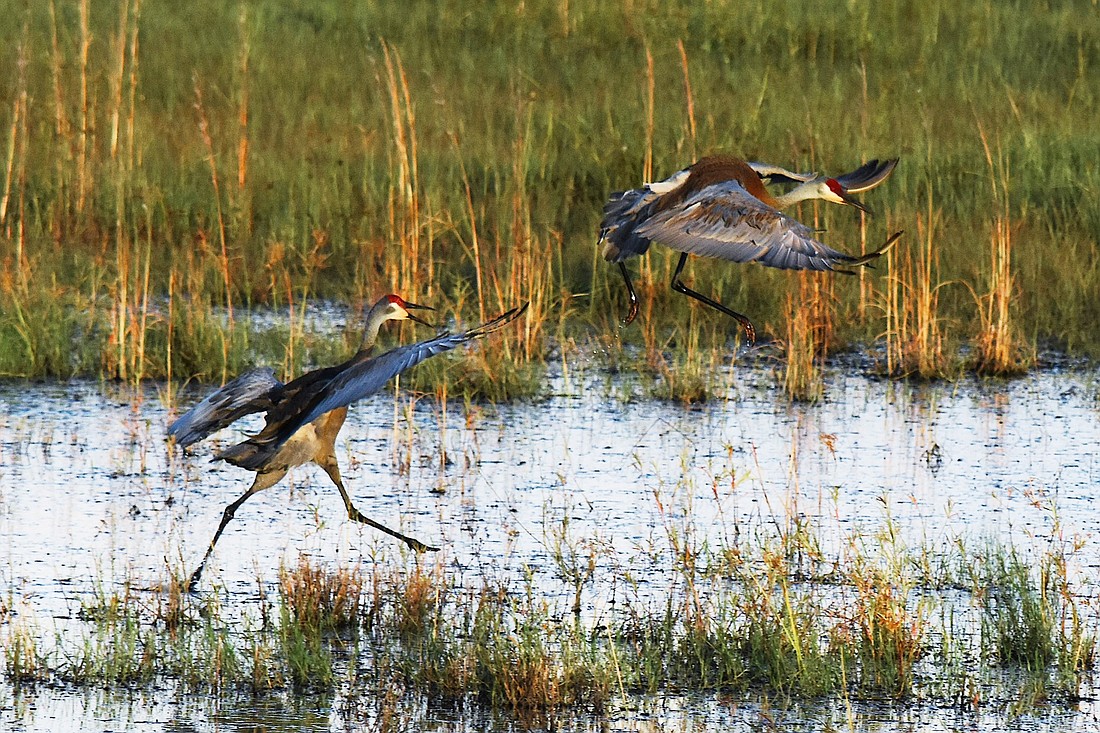- April 29, 2025
-
-
Loading

Loading

Suncoast Waterkeeper has collected nearly 1,000 signatures on a petition urging the Board of County Commissioners to keep Manatee County’s Comprehensive Plan as is when it comes to protecting local wetlands.
Commissioners George Kruse and Vanessa Baugh thought the move to align Manatee County's wetland protections with state regulations — in other words allowing construction closer to wetlands — could be premature. Kruse said he doesn’t like cutting environmental protections, and while Baugh won’t be voting due to her resignation taking effect July 30, she doesn't believe any of the commissioners had enough information yet to consider such cuts.
“At this point, the board probably isn’t very familiar with what the state regulations are and how they look in comparison to ours,” Baugh said. “I think we need to hold down all the rhetoric a little bit and let the board take a look and see what’s there.”
The issue was addressed at a planning task force meeting on July 20 when consultant Daniel B. DeLisi of DeLisi, Inc. delivered his findings that language in the county wetland regulations could be changed to duplicate the state’s requirements.
The proposal is to lower county regulations to meet the state’s minimum regulations when it comes to building near wetlands and watersheds, which would require amending the county’s Comprehensive Plan.
One example is buffer requirements. Depending on the situation, county requirements are currently either 30 or 50 feet of a buffer is needed between wetlands and/or watersheds, and construction, whereas the state minimum requirements are lower at 15 feet with an average of 25 feet.
Abbey Tyrna, the executive director of Suncoast Waterkeeper, said research shows that a 75-foot buffer is needed to protect water quality.
“Does that mean a 50-foot buffer isn’t doing a good job? No, it means we could be doing a better job,” Tyrna said. “Instead of removing buffers, we should be enhancing them given the plight of our water quality right now. It doesn’t make sense to go backward when we have blue-green algae literally blooming in our drinking water source right now.”
According to the Environmental Protection Agency’s Planner’s Guide to Wetland Buffers for Local Governments, wetlands not only provide habitats for wildlife, they help control flooding and reduce damage from storm surges.
Buffers also trap sediments and pollutants that would otherwise enter waterways and can help recharge groundwater in some areas. Recharging, the process of refilling the aquifers underground, most commonly occurs through rainfall.
According to Tyrna, Manatee County currently has some of the most protective measures in place statewide when it comes to wetlands.
The review seemed to be a directive of the board after Interim Director of Development Services Nicole Knapp said at the task force meeting, "(The board) wanted us to take a look at duplicative language and this was one of the areas that they asked us to look at."
Kruse was adamant that trimming down wetland protections was not a directive of the board. The directive was to look at duplicative language only.
“If anything, I felt like we were going in the other direction, so at no point do I believe the board directed anything unless someone wants to take a really broad view of what we say,” Kruse said. “We support getting rid of unnecessary regulations because excessive regulations add to the cost and time of development, minimize affordability and cause undue burdens based on government overreach. We have said things along those lines, and I stand by that and 100% believe that.”
When asked to clarify, Knapp said, “The board might not have tasked us with specifically amending the wetland protection review process, however, they asked us to remove duplicative process when regulated by another authority.”
Tyrna believes additional wetland protections are not duplicative and equated that line of thinking to an airbag being duplicative of a seatbelt.